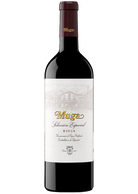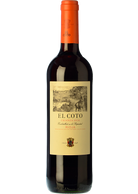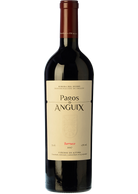Red wine
Red wines, which obtain their colour from pigments found in the skins of red grapes, are mostly considered to be dry wines. They are a wonderful accompaniment to dishes of varying degrees of intensity, depending on the style adopted in their fabrication and the ageing process they undergo. Internationally well-renowned grape varieties such as Cabernet Sauvignon, Syrah and Pinot Noir give rise to some of the world’s best red wines in such disparate places as France, Spain, the United States and Australia.







Red wine, all the keys to successfully understanding and enjoying it
How are red wines made?
In red wine production the juice of the grapes plays its part, but the solid components, specifically the skin and pips, are also involved. After selection, the highest quality grapes proceed to destemming, a process which separates the stalks (the cluster’s frame) from the grape berries so that the wine doesn’t acquire herbaceous notes.
Afterwards, thanks to the action of yeasts, alcoholic fermentation occurs, the process which gradually converts the grape sugars into alcohol. During this phase it’s very important to keep the cap (the covering of skins) constantly moist in order to extract the aromas and colour more effectively, as well as to avoid any oxidation of the skins, and this is achieved by means of pumping over or punching the must, which entails stirring the skins.
When the skins are thought to have contributed all they can to the wine, they are removed in a procedure known as drawing off. The resulting pulp will then be pressed with as much strength as is required and may be incorporated into the wine, subject to the quality desired.
It’s also usual for red wines to undergo so-called malolactic fermentation, a practice which transforms the sharp malic acid into gentle lactic acid, thus lowering the overall sensation of acidity in the wine and making it much more pleasant on the palate. Having reached this point, a decision will be taken regarding whether the wine should remain young or supports being allocated to ageing.
Red wine aging
Ageing is very important for red wine, since it adds aromas and elements which increase both the aromatic and tactile complexity of the wine. Inside the barrels there occurs a host of processes which help the wine to round off and gain in balance and amplitude thanks to the oxygen let through by the wood’s tiny pores. In addition, good quality oak contributes the aromas of spices such as vanilla and cloves to red wines, endowing them with extra aromatic complexity.
Depending on the ageing time of the red wine varieties, both in barrel (usually made of oak) and other containers (amphora, demi-john, egg-shaped concrete vats) as well as in bottle, when we consider the Spanish situation and in accordance with stipulations laid down by each denomination of origin’s Regulating Council:
- Young wines or ones made that same year. Without any ageing time or insufficient according to what is stipulated.
- Crianza. Between six and twelve months in oak barrels, and resting in bottle for up to two years after production, before they can be released.
- Reserva. A minimum of one year in oak barrels and at least two in bottle until three years have passed since their production.
- Gran Reserva. At least 24 months in barrel and another 36 in bottle. It’s implicitly understood that the musts used in Reserva and Gran Reserva production are a selection of the best made by each particular winery.
Red wine grapes
Some of the most popular red grape varieties are Cabernet Sauvignon, Pinot Noir, Syrah, Malbec, Nebbiolo, Grenache (Garnacha), Merlot and Tempranillo. Cabernet Sauvignon and Syrah are examples of those usually synonymous with fairly strong wine, whereas others, such as Pinot Noir and Nebbiolo, more often provide delicate and perfumed wines.
Red wine regions
Regions which enjoy a greater reputation in red wine production are located in Old Europe, especially in France, Italy and Spain, although countries in the so-called New World, headed up by the United States, Australia, Argentina and Chile, also produce top quality wines.
In Europe, there has traditionally been a preference for mixing different grape varieties to make red wines, whereas the newer countries have chosen to make single varietal wines with a greater fruit presence and less barrel dominance than is normal in Europe.
When choosing a red wine, its place and denomination of origin can give you many clues about the wine, with those produced in warm climates being more robust and ones coming from cooler latitudes more fragrant and delicate.
Red wine styles and food pairing
Apart from colour, grape skins contain a substance known as tannin, responsible for a wine’s harshness and dryness. Therefore, the longer the time the must spends in contact with the skins, the greater will be the wine’s sensation of astringency and corpulence.
Other key elements in winemaking, such as barrel usage, also release tannins which bring structure to the wine.
Lighter wines are usually expected to be drunk within a shorter period of time and work wonderfully well with dishes of medium intensity such as less heavy red meats or semi-cured cheeses, whilst more robust reds generally benefit from a certain amount of time in bottle and pair up with more substantial dishes, such as mature cheeses and meat stews.
If you’re looking for fruity wines it’s best to go for those labels showing a recent vintage, whereas if you prefer the complexity of Crianzas and Reservas you should look for wines with several years notched up behind them.
















